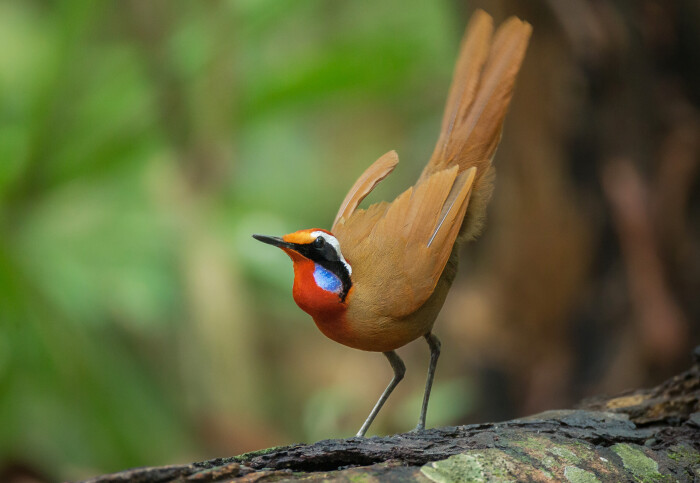How forest fragmentation affects birds depends on their wings

The Malaysian rail-babbler
How easily birds can fly between suitable areas strongly determines whether a particular species can survive habitat fragmentation.
A new study shows why tropical birds are likely to be more vulnerable to forest fragmentation, and suggests conservation policies need to take into account the role of climate in determining the ability of animals to move across fragmented landscapes.
One major implication for management of fragmented forests is that ‘corridors’ or ‘stepping stones’ of forest between larger intact areas are needed to increase connectivity and allow species to cope in these landscapes, particularly in the tropics. Tom Weeks
As logging and agricultural expansion break up forests around the world, some animals will be badly affected while others are able to adapt. However, how each species responds varies depending on a wide range of factors, such as their diet, the local environment, and how easy it is for them to cross gaps between the remaining patches of natural habitat.
Researchers have previously observed that sensitivity of birds to forest fragmentation varies by latitude, with those at higher latitudes better able to cope. The leading theory for this was that higher-latitude forests have gone through an ‘extinction filter’, meaning that since the landscapes have been degraded for longer (for example, by periods of glaciation) the less-resilient birds have already gone extinct.
However, a new study published today in Nature Ecology & Evolution, led by Imperial College London researchers, shows that the extent to which bird wings are designed for gap-crossing is a more important factor affecting their ability to survive habitat fragmentation.
First author of the study Tom Weeks, from the Department of Life Sciences (Silwood Park) at Imperial, said: “Our study confirms that forest fragmentation will have more severe effects on tropical species, and suggests that this pattern reflects inherent differences among species in their ability to cope.
“One major implication for management of fragmented forests is that ‘corridors’ or ‘stepping stones’ of forest between larger intact areas are needed to increase connectivity and allow species to cope in these landscapes, particularly in the tropics.”
Dispersal ability determines sensitivity
The team combined field survey data with a proxy for flight ability called the hand-wing index (HWI). The HWI reflects the elongation of the wing, with more elongated wings being better adapted for sustained flight, providing a rough estimate of whether birds can or would travel between habitat patches.
Our results highlight how bird wing shape provides a simple metric to identify communities and species most sensitive to fragmentation, which could be useful in monitoring the impacts of land-use management, identifying vulnerable species, and designing protected area networks. Dr Joseph Tobias
Previous research from the team showed a gradient in dispersal ability, from low near the equator to high at higher latitudes. They determined dispersal ability was strongly predicted by whether birds were distributed across variable seasonal climates.
Birds at low latitudes live in more stable climates and therefore appear to be adapted to a highly sedentary lifestyle, often defending their territories all year round, with no need to migrate. Comparatively, birds at higher latitudes must be dispersive to track variability in environmental conditions and seasonal resources.
The new study builds on this by determining the effect of this gradient on the response to forest fragmentation for 1,034 bird species worldwide. The team found that sensitivity is more strongly predicted by dispersal ability than other factors such as latitude, body mass, and historical disturbance.
One key reason for this trend is that many bird species adapted to the interior of tropical forests, such as the Malaysian rail-babbler, have relatively short, rounded wings and reduced ability to cross gaps between forest patches to access essential resources, like food or mates. They often disappear from smaller forest patches and seem to need very extensive areas of forest to survive.
Lead researcher Dr Joseph Tobias, from the Department of Life Sciences (Silwood Park) at Imperial, said: “Our results highlight how bird wing shape provides a simple metric to identify communities and species most sensitive to fragmentation, which could be useful in monitoring the impacts of land-use management, identifying vulnerable species, and designing protected area networks.”
-
‘Climate-driven variation in dispersal ability predicts responses to forest fragmentation in birds’ by Thomas L. Weeks et al. is published in Nature Ecology & Evolution.
Top image credit Shutterstock/Red ivory.
Article text (excluding photos or graphics) © Imperial College London.
Photos and graphics subject to third party copyright used with permission or © Imperial College London.
Reporter
Hayley Dunning
Communications Division